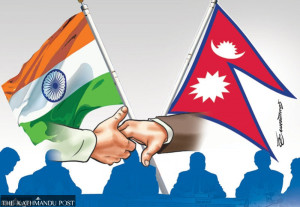Columns
Civilians to the rescue
The Yeti crash has once again brought to the fore the need for effective disaster management.
Shrijan Bahadur Malla
In the last few days, the national media and social sites have been filled with news of the Yeti Airlines plane crash. The government even declared a public holiday to mourn the deaths in the disaster. These sentimental reactions are obvious during such a catastrophe, but they will recede with time until another calamity occurs. Thus serious attention and action are required to ensure effective risk reduction and management in a country which is very vulnerable to disasters.
The 2015 earthquake, the Covid-19 pandemic and many other disasters have taught us that authority and resources are two critical needs to carry out an effective response. Unfortunately, both are lacking in our context. The establishment of the Covid-19 Crisis Management Centre (CCMC) during the pandemic, and the establishment of the Disaster and Crisis Management Division at the Ministry of Home Affairs are some examples of how this task has not received the required priority from the state.
The CCMC was established marginalising the role of national disaster risk reduction institutions even though crisis and disaster management are two different disciplines that can’t be addressed via a single mechanism. Also, there is no funding for the project as there is no budget code in the Finance Ministry’s Line Ministry Budget Information System. And among the four layers of disaster governance (central, provincial, district and local), the province has remained the weakest while the district is the most effective.
Specialised career
Nepali bureaucrats have repeatedly admitted that they are incompetent in disaster risk reduction, mitigation and response. This is because disaster management has remained an ad hoc exercise. Only a few officials in the civil service have spent most of their career managing disasters. In the private sector, though, disaster management and climate change are emerging as a lucrative career field. Dozens of experts and activists have been born. The possibilities of work in the international humanitarian sector have made this subject more attractive, and disaster management studies have become one of the priorities among youngsters. In contrast, the Nepali civil service has failed to grasp this opportunity.
Nepal should learn from developed countries like Japan how they have established disaster management as a separate career path in their civil service mechanism. As the bureaucrats and civil servants are leaders in the field that drives the private and humanitarian sector, they need to be competent, specialised and dedicated. Disaster management is a costly venture, and developing nations such as Nepal rely heavily on international assistance. Consistency in the resource flow is also equally important to ensure the sustainability of the progress achieved, and that demands national investment. International support is temporary and fluctuates with the vagaries of international politics.
In Nepal, capacity building, infrastructure development and resource management have been highly dependent on foreign assistance. That is why consistency in development has been missing in most cases. Disaster management is a multispectral engagement which needs mega investment, and it can't come only from the government; assistance from the private sector is equally important.
The developed world doesn't see disaster management as a responsibility of the security forces. For two reasons. One, they want to maintain civil-military relations; and two, they have established a civilian response mechanism such as the flying squad. In Nepal, establishing a civilian response mechanism is not financially feasible, and the subject does not come up in top-level discussions. But the time has come for the state to think along these lines. In this regard, one question keeps coming to my mind: What kind of response would there have been if the 2015 earthquake had occurred during the Maoist insurgency? And the epicentre had been Libang, Rolpa instead of Barpak, Gorkha? Would we have received such extensive international military assistance? Would it have been easy for the Nepali security forces to carry out humanitarian work among the insurgents they were fighting?
We can learn so much from the responses to the Cambodian drought in 2004, Indian Ocean tsunami in Aceh, Indonesia in 2004, and Typhoon Haiyan in the Philippines in 2018. Of course, the role of the security forces can’t be undermined; but they shouldn't be overburdened as they are now, and there should be a clear-cut policy. Duplication of effort, confusion in command control and ambiguity in the roles and responsibilities are the hindrances the Nepali security forces are suffering from. At the same time, forming civilian volunteer forces and specialised flying squads, and most importantly, strengthening the current fire fighting capability should be the state's priority.
Institutional mechanism
There is a need to strengthen the current institutional mechanism that is the National Disaster Risk Reduction and Management Authority. Maintaining its autonomous character, not only on paper but in action too, should be the topmost necessity. We should learn from our neighbours too in this context, how India, Pakistan and Malaysia have put their leading agency in disaster management under the leadership of the prime minister. This has not only given government priority to the enterprise, but also made decision-making easy, whether it’s critical response, resource allocation or comprehensive effort from the state mechanism.
The unfortunate crash of Yeti Airlines has once again brought to the fore the need for effective disaster management. Let us hope the effort will not go in vain this time. Let’s work for a permanent solution so that no more mourning holidays will be required in the country.




 20.12°C Kathmandu
20.12°C Kathmandu















